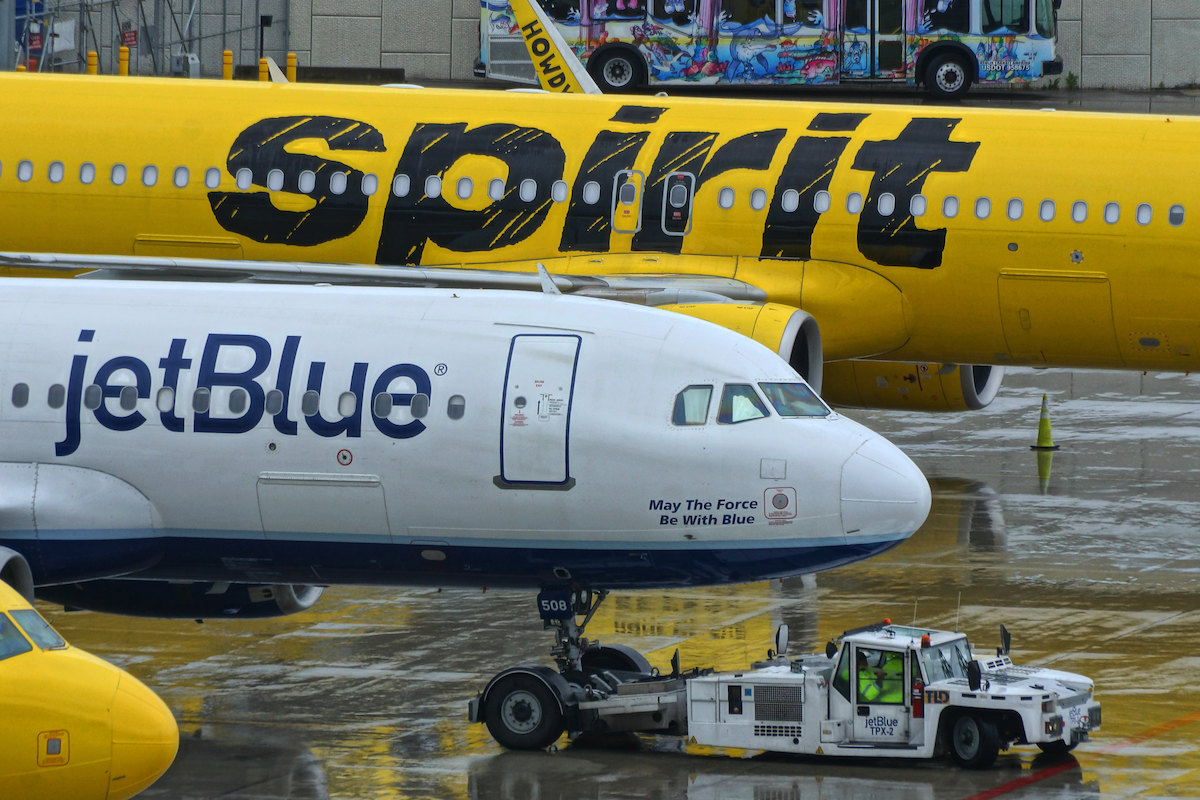Spirit Airlines Struggles to Control Costs as It Awaits Fate of JetBlue Merger

Photo Credit: Flickr / JT Occhialini
Spirit Airlines long succeeded by keeping its costs so low that it could afford to charge flyers essentially pennies per mile — plus lots and lots of extra fees — to fly. The pandemic has changed this equation with cost control a pressing issue for the budget carrier, and the larger industry, even as travelers return in droves.
The Florida-based company faced cost and productivity headwinds in the fourth quarter. Unit costs, measured by costs per available seat mile, excluding fuel, increased 14 percent compared to 2019 during the three-month period; the metric was up 21 percent for the full year. A new pilot contract is one factor elevating Spirit's cost base. In addition, the airline has felt compelled — and at times forced by circumstance — to operate a suboptimal flight schedule. For one, it’s elected to do more of its flying during offpeak periods, simply to alleviate operational stress during busier times and load factors have accordingly suffered. Put another way, Spirit is flying a schedule with more operational buffers, due to what Chief Financial Officer Scott Haralson called Tuesday “continued industry infrastructure constraints.”
One of those constraints is air traffic control congestion, notably at the Federal Aviation Administration’s Jacksonville center, affecting the critical Florida market. Spirit is separately managing through frustrating maintenance delays affecting Pratt & Whitney geared turbofan engines used for its Airbus A320neos. “Pratt & Whitney continues to struggle to support its worldwide fleet of neo aircraft as MRO capacity remains constrained and turnaround times for engines in the shop have been nearly three times longer than the historical averages,” Spirit CEO Ted Christie said Tuesday. On top of all that, Airbus recently informed the carrier that some of its A320-family jets will arrive late. As a result, Spirit will have seven fewer new planes this year than expected, forcing it to reduce its planned capacity for the year.
The cost challenges come as Spirit reported a modest 4 percent operating profit margin for the fourth quarter, and forecast an operating loss for the current January-to-March quarter. The 4 percent figure, incidentally, was identical to what prospective merger partner JetBlue Airways reported for the same period.
Both JetBlue and Spirit have returned to profitability coming out of the Covid pandemic. But they’ve lagged the industry’s Big Three — American Airlines, Delta Air Lines, and United Airlines — in terms of financial performance. For all of 2022, Spirit joined JetBlue in reporting a loss, with a negative 3 percent operating margin. Of America’s 11 largest scheduled airlines, the only other to report a loss last year was Hawaiian Airlines (Frontier Airlines will report on Wednesday).
Spirit was among America’s most profitable airlines through much of the 2010s, including the year 2019, when its operating margin reached nearly 14 percent. In 2022, revenues came back strong, remaining so in the fourth quarter. Unit revenues in the three months increased 17 percent from the same period of 2019, boosted by robust travel demand and strong take-up of ancillary revenues, a critical component of Spirit’s business model.
The unit revenue gains are especially impressive given how much Spirit has grown since before the pandemic. Its fourth quarter available seat miles, a measure of capacity, were up by 23 percent from 2019. According to Diio by Cirium schedule data, the airline’s biggest growth markets since 2019 include Orlando and Las Vegas, its second and third busiest airports after Fort Lauderdale. Atlanta, Los Angeles, and Newark are some other areas of major expansion. It also entered many new airports since 2019, including Miami, Salt Lake City, St. Louis, and Memphis. It’s withdrawn the most seats from Baltimore-Washington and Denver, two of Southwest’s largest strongholds.
In addition to its cost challenges, pilot availability amid training bottlenecks and elevated attrition rates are further complicating Spirit’s ability to restore its financial success of the 2010s. Doing so has proved difficult for most airlines, but high utilization rates are especially important to ultra-low-cost carriers like Spirit. In addition, a key ingredient of its past success was rapid capacity growth, which creates economies of scale. United Airlines' CEO Scott Kirby famously likened the ultra low-cost carrier business model to a “Ponzi scheme” in today’s infrastructure- and labor-constrained environment.
Spirit naturally begs to differ, assuring investors that it will be profitable in all but the first quarter this year, and end 2023 with a full-year profit. Longer-term, it still targets the “mid-teens” operating margins it routinely produced last decade. Achieving that will depend on lowering unit costs, and to do that, Haralson said “the biggest lever is utilization.”
Of course, Spirit’s future performance will hinge on its pending merger with JetBlue. The U.S. Department of Justice is currently considering whether to file a lawsuit attempting to block the deal, a decision Spirit expects the DOJ will make in the next 30 days.
